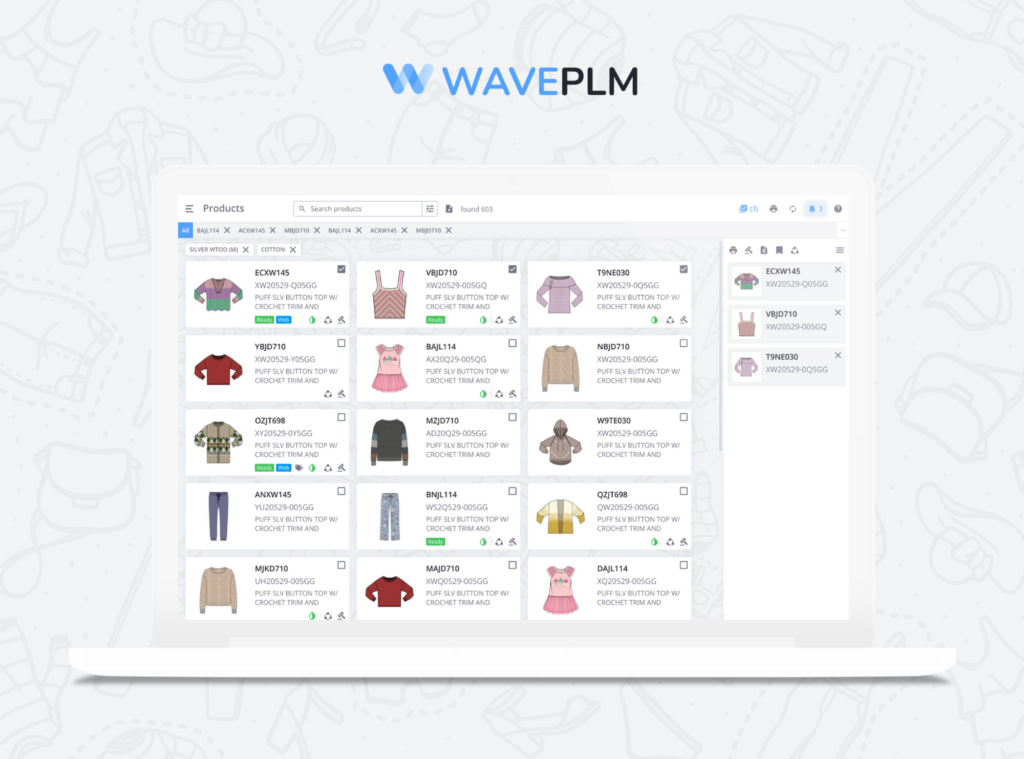Fashion is a constantly evolving industry, with new trends emerging every season. To stay competitive, fashion companies need to keep up with these trends and manage their product development and production processes efficiently. This is where fashion management software comes in. In this article, we’ll explore the role of fashion PLM in navigating market trends and why PLM software is crucial in today’s fashion industry.

Fashion management software, also known as Product Lifecycle Management (PLM) software, is designed to help fashion companies manage their product development process from ideation to production. It helps streamline the process, improve communication between teams, and ultimately bring products to market faster.
A well-designed PLM software can ensure that the entire product development chain is aligned with current trends, from design to production.
One of the most significant advantages of using fashion management software is its ability to manage the entire product lifecycle. From the first design sketches to the final product, PLM software can help companies streamline the product development process, reduce costs, and improve efficiency. With PLM software, teams can collaborate and share information seamlessly, regardless of their location.
Benefits of a Fashion PLM
Fashion management software provides valuable insights into market trends. By analyzing data and trends, companies can make more informed decisions about their product development processes. PLM software helps companies track sales data, customer feedback, and market trends. It can be used to inform product development decisions. By keeping up with market trends, fashion companies can design products that are more likely to sell and avoid wasting resources on products that don’t meet customer needs.
Additionally, PLM software helps fashion companies improve supply chain management. By keeping track of suppliers, materials, and production schedules, fashion companies can reduce costs and improve efficiency. PLM software helps companies manage the entire supply chain, from raw materials to finished products. Overall, by streamlining the supply chain, companies can reduce lead times, minimize waste, and improve the quality of finished products.
In addition to these benefits, fashion PLM can help fashion companies improve sustainability. By reducing waste and improving efficiency, fashion companies can reduce their environmental impact. PLM software can help companies identify areas of the supply chain where waste can be minimized. Moreover, it helps to reduce the amount of energy used in production processes.

One such PLM software is Wave PLM, which offers a free 3-month demo to interested parties. Wave PLM helps fashion companies manage their product development process efficiently. It offers a range of features that can help fashion companies manage product data, project management, sample management, and quality control. Additionally, Wave PLM can integrate with other systems, such as design software and ERP systems.
Wave PLM – Software for Fashion Teams
Wave PLM can help fashion companies navigate market trends by providing valuable insights into customer needs and preferences. The software allows companies to track sales data, customer feedback, and market trends, which can be used to inform product development decisions. By keeping up with market trends, fashion companies can design products that are more likely to sell. It also helps to avoid wasting resources on products that don’t meet customer needs.
Furthermore, Wave PLM can help fashion companies improve supply chain management by keeping track of suppliers, materials, and production schedules. This helps reduce costs and improve efficiency.
In conclusion, fashion management software is essential for navigating market trends in the fashion industry.
Overall, by managing the product lifecycle, improving supply chain management, and providing valuable insights into market trends, PLM software helps fashion companies stay competitive and improve efficiency. Wave PLM is a great option for fashion companies looking to try out PLM software. Moreover, with its free 3-month demo and a range of features it can help companies manage their product development process more efficiently.





Leave a Reply